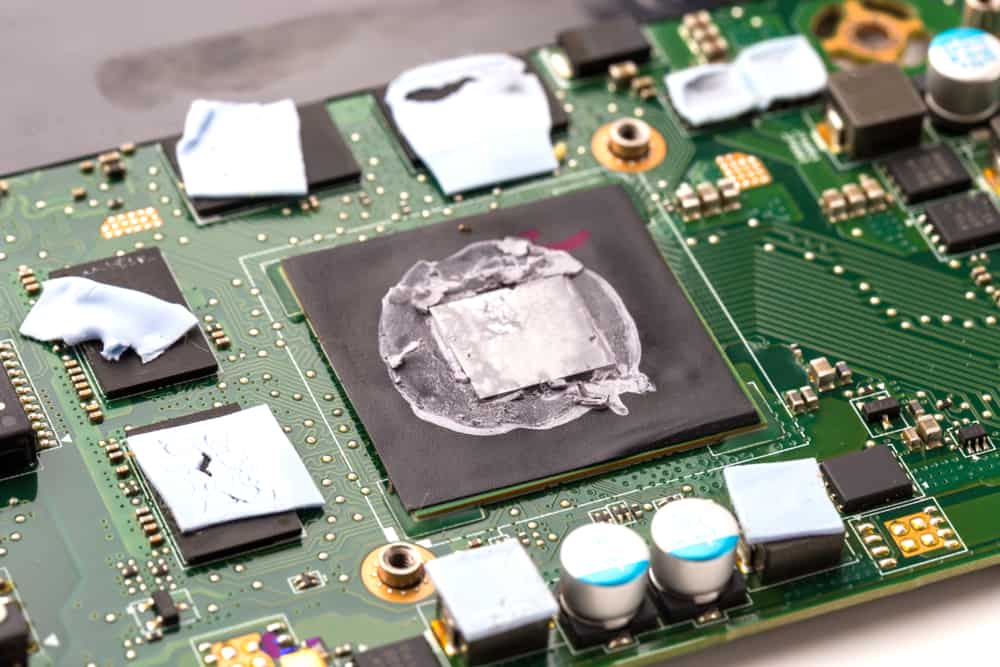What Is Thermal Compound?
Thermal compound (aka CPU thermal paste) fills the microscopic gaps between a processor and the heat sink to improve the transfer of heat from the processor. Without it, a CPU can become overheated and break.
Metal-based thermal compounds are the best performers but are also more expensive. They also conduct electricity, so they can cause short-circuiting if you spill them on the motherboard components or CPU pins by accident.
Thermal Conductivity
The thermal conductivity of a material is the ability of that material to transmit heat by conduction. It depends on the temperature gradient, the properties of the material, and the path length that the heat follows.
Metals like aluminum and copper have very high thermal conductivities, over 10 times greater than that of air. In insulators, however, thermal conductivity decreases with increasing lattice disorder.
In order to conduct heat, a material must have enough atoms or molecules in the crystalline structure to move freely and carry the energy with them. Therefore, the thermal conductivity is inversely proportional to density for fixed temperature.
In general, highly pure materials have higher thermal conductivities than impure ones. Impurities reduce thermal conductivity by introducing defects in the crystal lattice, reducing the free electrons available to transport heat. The thermal conductivity of a material also varies with particle size. This effect is called anisotropy. The more parallel the particles are in a material, the better its thermal conductivity is.
Thermal Resistance
A material’s ability to resist heat transfer is known as its thermal resistance. It depends on the material’s composition, thickness and surface area. A thicker material has a higher thermal resistance than a thinner one because there is more mass to slow down the flow of heat energy.
A TIM’s thermal resistance also depends on the temperature difference between the interface and ambient air. As the temperature rises, a TIM’s thermal resistance will increase.
The thermal resistance of a TIM can be tested with a temperature measurement instrument, such as a heat flow meter. However, it is important to note that a high thermal resistance does not necessarily mean more heat. The amount of heat transferred is based on the temperature difference and other factors such as the size of the interface. The capacity of a material to resist the movement of heat is determined by its specific thermal resistance (Rl) in kelvin-meters per watt.
Thermal Adhesive
The thermal adhesive in a thermal paste is used to create a robust bond between the components that it’s applied to. It also fills in microscopic gaps between surfaces, which helps heat transfer more efficiently.
Henkel offers a range of thermally conductive adhesives in pads, liquids and films. Their combined bonding and thermal management capabilities help reduce the need for screws and clips in devices.
These products use metallic fillers such as silver, aluminum or zinc to provide high thermal conductivity. They’re suspended in an epoxy resin, which provides the adhesive qualities. Some have a moderate viscosity, making them easy to use and simple to clean up. Others, such as Gelid GC-Extreme, have more of a traditional TIM consistency.
It’s important to follow safety guidelines and apply thermal adhesives carefully. They can give off toxic fumes during curing and may cause health problems if inhaled or ingested. They also require proper disposal methods. This ensures the environment is protected from hazardous waste.
Heat Dissipation
Known by several names such as thermal paste, thermal interface material (TIM), gap filler and CPU grease, the primary function of a thermal compound is to effectively transfer heat away from the component to the heat sink. This is achieved by filling the microscopic gaps at the interface between a processor or other heat generating semiconductor device and its mechanical heat sink.
The ideal contact surface between a processor and a heat sink is smooth, flat and completely conductive. But real world applications often result in a combination of rough surfaces and minuscule air gaps, which act as insulators and prevent the maximum possible heat dissipation.
By eliminating the air gap and replacing it with a liquid metal-based product such as Phobya’s Liquid Metal Compound LM or CoolLaboratory’s MasterGel Pro V2, you can dramatically increase heat transfer between the CPU and its cooler. This will allow the processor to run at higher speeds and help avoid overheating which can damage it or cause it to fail.

